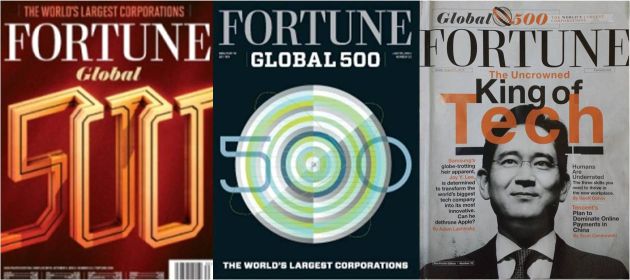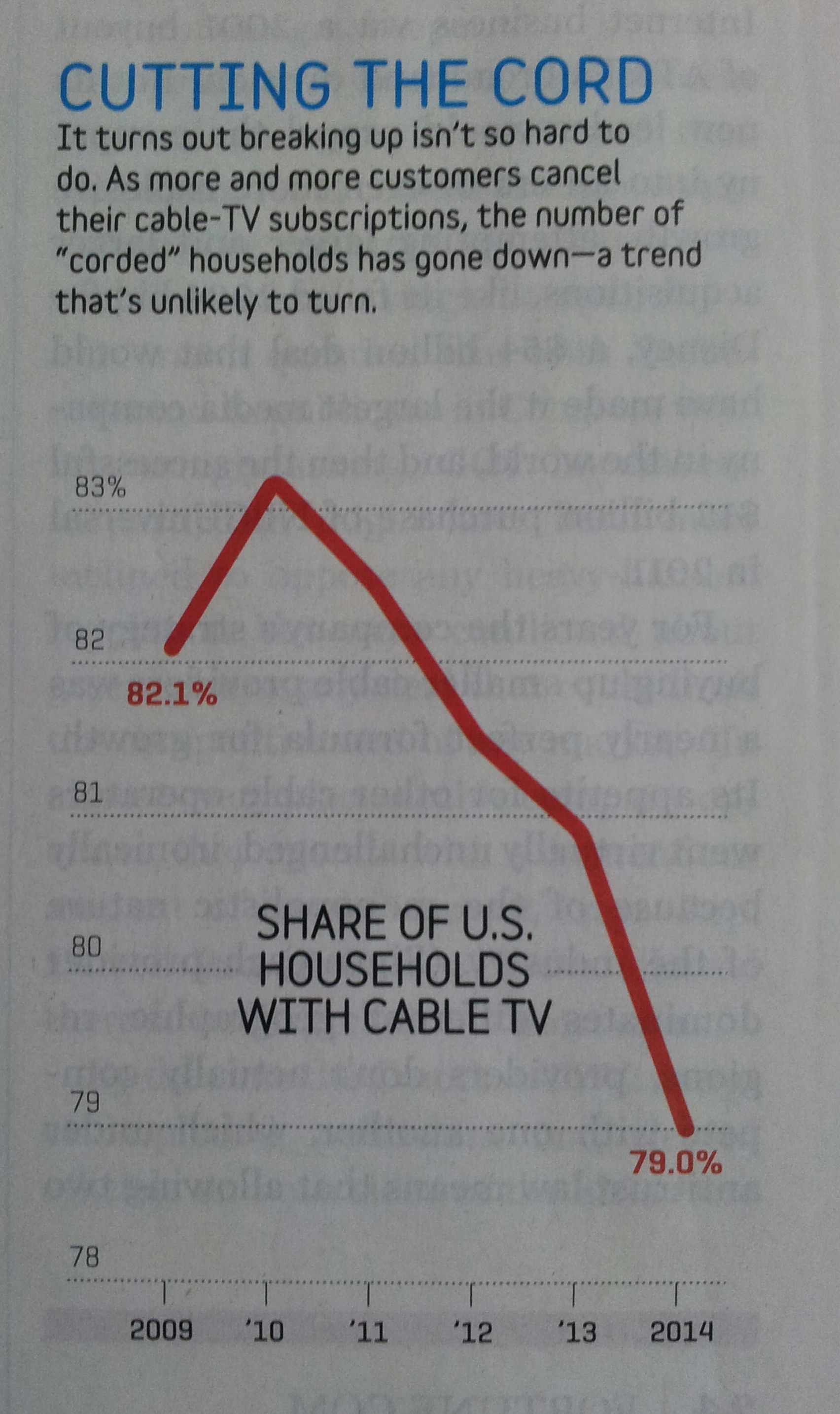FORTUNE magazine seems to be undergoing a transformation lately. I’ve listed the key changes I’ve observed in the magazine over the past 5-6 months.
Disruption. Disruption. Disruption. There’s a spate of articles on disruption of incumbents by newcomers. FORTUNE goes beyond the usual suspects like financial services, media and technology to drag industries like agriculture and food processing into its “everything is getting disrupted” rhetoric. At times, while drinking the disruption Kool-Aid, the magazine takes extra liberties with truth. More on that in a bit.

Inside Stories. I see a major focus on investigative journalism, with several stories billed as “insider view”. Many of them are much longer than usual articles, with the one on Sony Hack of the Century taking up 22 pages out of the 64 pages of the 1 July issue.
GLOBAL 500 Not Cover Story! The Fortune GLOBAL 500 story appears as a thin strip on the cover. This is the first time nearly two decades of my following the list that it’s not featured as the cover story.
Lacklustre Transition to Digital. By thinning down the print issue and encouraging readers to “leave the page and head to the screen”, it’s quite clear that FORTUNE is trying to go digital. That’s not a bad thing except that the magazine doesn’t get digital. It shows abject disregard to the intrinsically interactive nature of the digital medium. It doesn’t respond to messages sent to its official Twitter Handle @FortuneMagazine.
Feh on @FortuneMagazine for leaving out the @bchesky napkin in its online article:( That's why I still prefer its print edition!
— GTM360 (@GTM360) July 21, 2015
Lying with Big Data. In his classic “How To Lie With Statistics”, the author Darrell Huff showed how it’s possible to mislead people by changing the origin of graphs. Although the book is nearly 60 years old, you can find blatant use of this popular tactic on the pages of recent issues of FORTUNE. To take an example, a recent article claims that rising trend of “cord-cutting” – i.e. canceling cable TV subscriptions – is killing the cable TV industry and uses the following graph to back the claim:

A quick glance at the curve would make you believe that US households are turning cord-cutters en masse and that the share of US households with cable TVwill come crashing down to zero in no time.
However, that’s far from the truth. The graph has conveyed this misleading impression by moving the origin of the vertical axis from 0% to 78%.
If you dig deeper, you’d notice that 82.1% of US households had cable TV five years ago and 79% of them still did so in 2014. While cable TV has definitely lost customers, the drop in its presence is merely 3.1 percentage points over five years i.e. CAGR of -0.77% p.a., which is not life-threatening by any standard. I’ve shifted the origin of the Y-axis to 0% – where it righly belongs – and replotted the curve, which you can see in the following exhibit:

Let me place the two curves side-by-side so that the stark difference between them becomes obvious to the naked eye.
While cord cutting is real – we knew that before this article – it doesn’t threaten cable TV anywhere as severely as the article would have us believe. And, with the recent hue-and-cry about widespread use of ad blockers on desktop and mobile browsers, it’s quite possible that many web content providers might be left with no source of revenues and fold up over a period of time, thereby reversing the cord-cutting trend in future.
Dodgy Behavior. FORTUNE recently changed its publishing frequency from bimonthly (2X / month) to monthly. As magazine readers would agree, this is a major change. Subscribers would also expect to be informed about it, not only as a matter of courtesy but because the change in frequency alters the date of last issue of current subscriptions, which are denominated by both number of issues and months. However, I didn’t receive any communication about this from the publisher. In fact, I found out about the frequency change purely by accident when I recently contacted FORTUNE to complain about non delivery of magazines during the previous four to six weeks; I was told that, well, since the magazine had become a monthly, there were no issues during this period. As its loyal subscriber for over two decades, it’s not easy for me to insinuate FORTUNE of dodgy behavior. But I realize I just did!
Maybe these changes can be tracked to the recent replacement of Andy Serwer by Alan Murray as the magazine’s editor. Maybe Murray deserves more time before we judge the transformation. But, as of now, these changes are not for the better.
